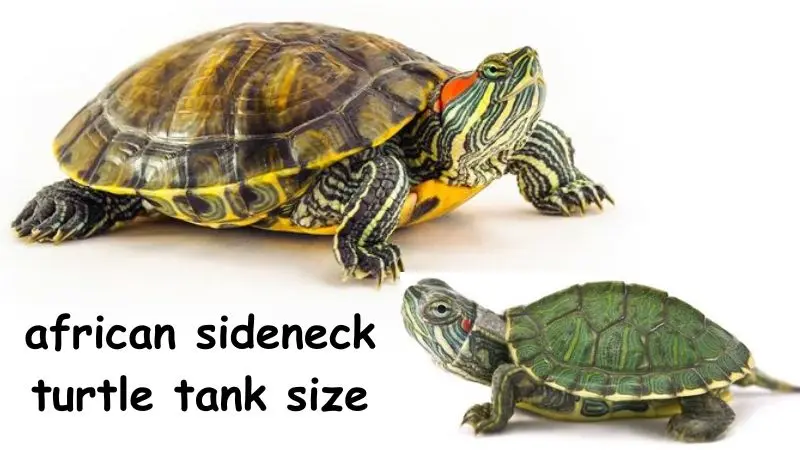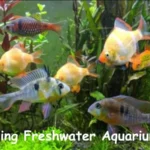marine life blog
African Sideneck Turtle Tank Size
The African sideneck turtle, a captivating reptile with its unique neck retraction mechanism, demands a spacious and well-designed tank to thrive. This essay of fishtankmagic.com will delve into the crucial aspects of african sideneck turtle tank size, exploring the factors influencing their well-being and providing practical recommendations for creating an ideal environment.
Understanding the Needs of African Sideneck Turtles
Before diving into the specifics of tank size, it’s essential to grasp the fundamental needs of African sideneck turtles. These semi-aquatic reptiles require a balanced habitat that caters to both their aquatic and terrestrial inclinations.
Aquatic Needs:
- Swimming Space: African sideneck turtles are active swimmers, requiring ample space to exercise and explore. A spacious tank allows for natural swimming patterns and prevents overcrowding, which can lead to stress and health issues.
- Water Depth: The water depth should be sufficient for the turtle to fully submerge, allowing for comfortable swimming and basking. A depth of at least 12 inches is generally recommended, with larger turtles needing even deeper water.
- Water Quality: Maintaining pristine water quality is paramount. Regular water changes, filtration systems, and the use of dechlorinators are crucial to prevent the buildup of harmful substances.
- Temperature: African sideneck turtles are cold-blooded and rely on external sources for temperature regulation. The water temperature should be maintained between 75-85°F (24-29°C) using a submersible heater.
Terrestrial Needs:
- Basking Area: A dedicated basking area is essential for thermoregulation and vitamin D3 synthesis. This area should be equipped with a basking lamp that provides a temperature gradient, allowing the turtle to choose its preferred basking spot.
- Substrate: The substrate in the basking area should be suitable for burrowing and should not pose a risk of ingestion. Options include sand, coconut coir, or a mixture of both.
- Humidity: African sideneck turtles require a humid environment. A shallow water dish or a humid hide can help maintain appropriate humidity levels.
African Sideneck Turtle Tank Size
The appropriate tank size for an African sideneck turtle is determined by its species and size. As a general rule, a larger tank is always preferable, as it provides more space for swimming, basking, and exploration.
Hatchlings:
- Tank Size: A 10-gallon tank is suitable for hatchlings.
- Water Depth: 4-6 inches of water is sufficient.
- Basking Area: A small basking platform should be provided.
Juveniles:
- Tank Size: A 20-gallon tank is recommended for juveniles.
- Water Depth: 6-8 inches of water is ideal.
- Basking Area: A larger basking platform is necessary.
Adults:
- Tank Size: A minimum of a 55-gallon tank is required for adult African sideneck turtles. Larger species may require tanks exceeding 100 gallons.
- Water Depth: 12-18 inches of water is recommended.
- Basking Area: A spacious basking platform should be provided, allowing for comfortable basking and thermoregulation.
Multiple Turtles:
When housing multiple African sideneck turtles, the tank size should be increased accordingly. A general rule of thumb is to add 10 gallons of water for each additional turtle. It’s crucial to ensure adequate space for each turtle to swim, bask, and explore without feeling crowded.
Factors Influencing Tank Size
Several factors beyond the turtle’s age and size influence the optimal tank size:
- Species: Different species of African sideneck turtles vary in size and temperament. Larger species, such as the Pelomedusa subrufa, require significantly larger tanks than smaller species like the Pelusios castaneus.
- Activity Level: Some African sideneck turtle species are more active than others. Active turtles require more swimming space and larger tanks to accommodate their energetic nature.
- Tank Setup: The tank setup, including the presence of decorations, plants, and hiding spots, can influence the perceived space within the tank. A well-designed tank with strategically placed elements can maximize the usable space for the turtle.
Consequences of Inadequate Tank Size
Providing an insufficient tank size for an African sideneck turtle can have detrimental consequences for its well-being:
- Stress: Crowded conditions can lead to stress, which can manifest in various ways, including lethargy, aggression, and weakened immune function.
- Health Issues: Inadequate space can contribute to health problems such as shell deformities, respiratory infections, and obesity.
- Behavioral Problems: Lack of space can lead to abnormal behaviors, such as excessive swimming or aggression.
Creating an Ideal Tank Environment
Beyond tank size, several other factors are essential for creating an optimal environment for African sideneck turtles:
- Filtration: A robust filtration system is crucial for maintaining water quality. Choose a filter that is rated for the tank size and provides adequate water turnover.
- Lighting: A combination of UVB and heat lamps is necessary for proper thermoregulation and vitamin D3 synthesis. UVB lamps should be replaced every 6-12 months.
- Decorations: Provide a variety of hiding spots, rocks, and plants to enrich the tank environment and encourage natural behaviors.
- Substrate: Choose a substrate that is safe for the turtle to ingest and provides a suitable environment for burrowing.
- Water Changes: Regular water changes are essential to maintain water quality. Aim for a 25-50% water change every 1-2 weeks.
Conclusion
Providing an appropriate tank size is fundamental to the health and well-being of African sideneck turtles. By understanding their needs, considering the factors influencing tank size, and creating a well-designed environment, you can ensure a fulfilling and enriching life for these captivating creatures. Remember, a larger tank is always preferable, as it provides ample space for swimming, basking, and exploring, promoting a healthy and happy life for your African sideneck turtle.












